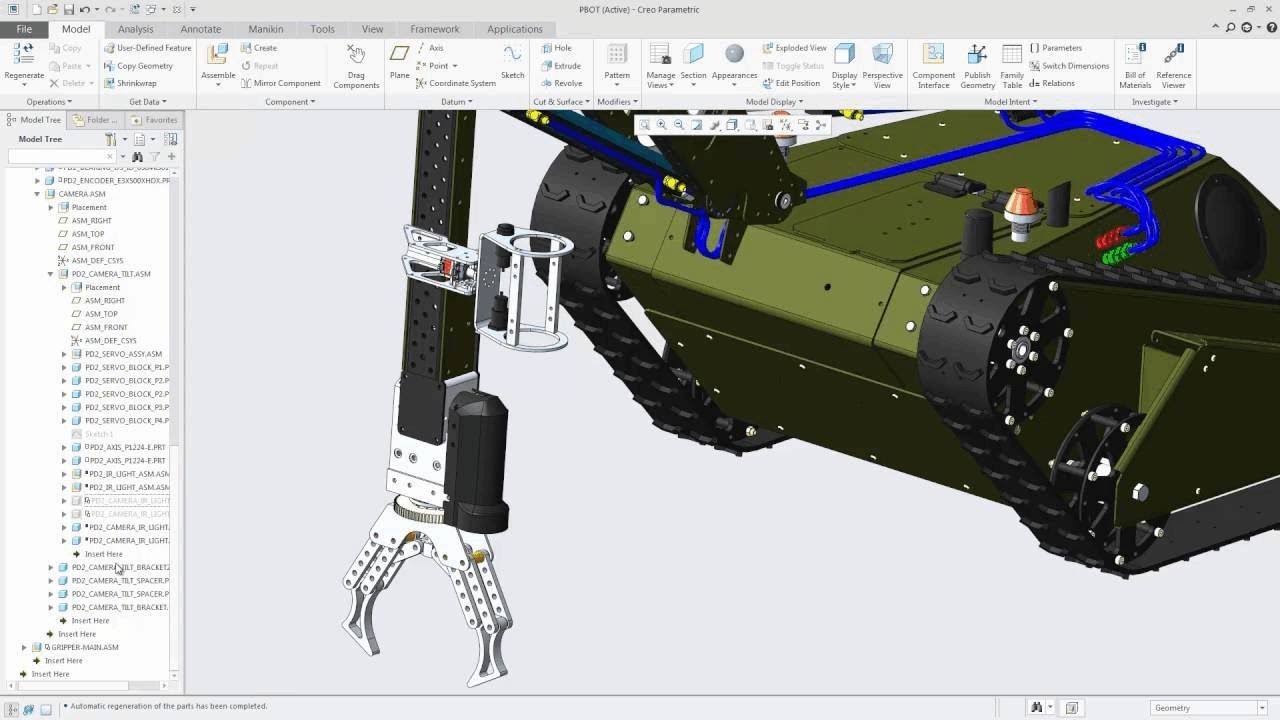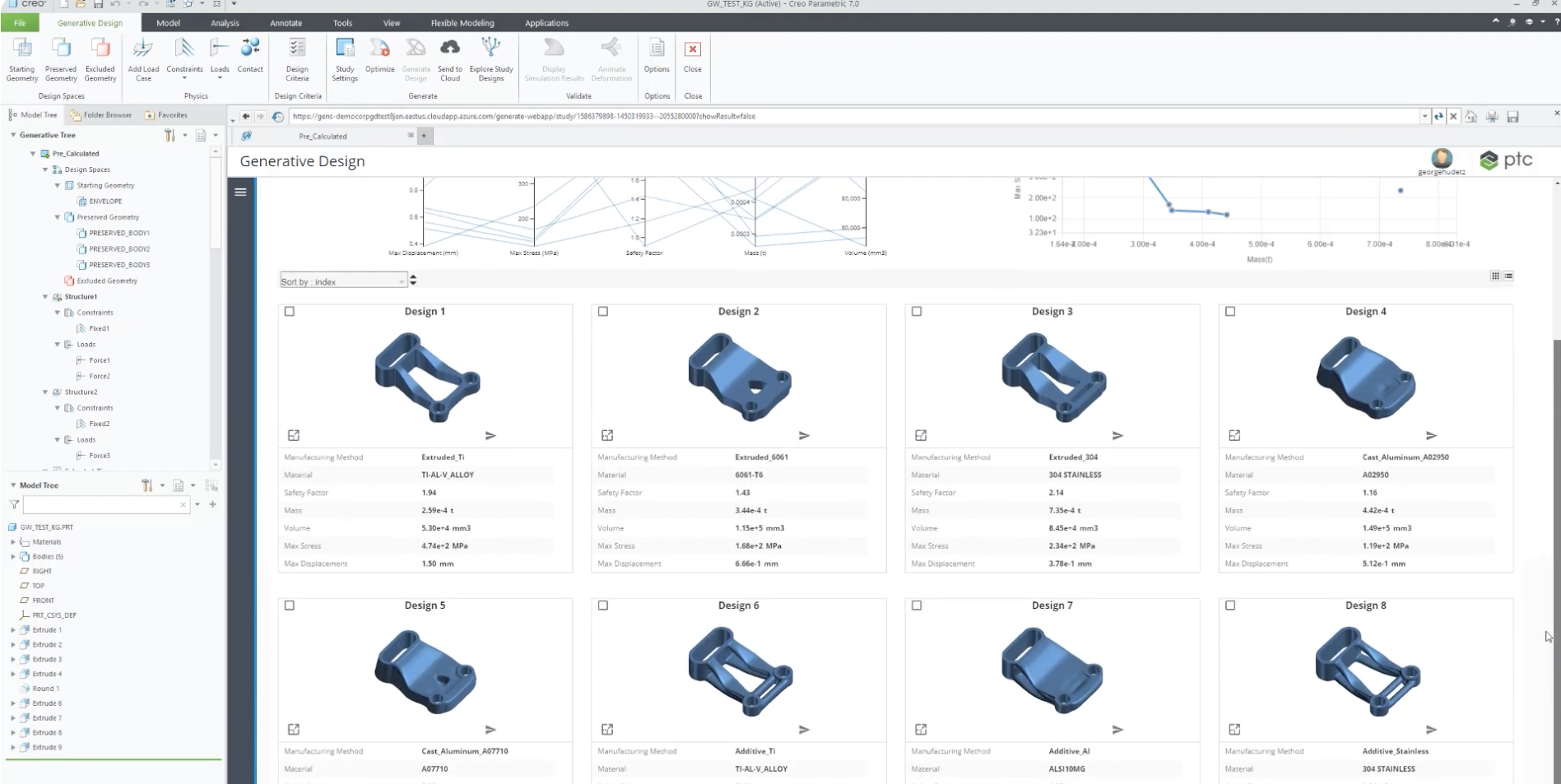The seemingly endless debate of Artificial Intelligence’s benefits and drawbacks has permeated all technological media. Why is this such a hot topic? The public wants to understand what AI can do, the technologies it can benefit, and what the future holds for AI. Today we will answer these questions as they relate to AI in CAD software, specifically AI for PTC Creo.
What is Creo?
To understand Creo, we must first get some background on CAD. Computer-Aided Design (CAD) is a technology that allows engineers to create and modify designs for structures and products. The most commonly used CAD type is 3D CAD. 3D CAD software permits users to create three-dimensional models of their designs. Creo is a popular 3D CAD software on the market.

Creo offers features such as parametric modeling, simulation, rendering, and animation. These features are designed to help engineers visualize their product designs. Additionally, Creo allows users to collaborate in the 3D environment which works well for engineering teams. Common industries that utilize Creo are manufacturing, automotive, and aerospace.

AI in CAD
Artificial Intelligence can be a helpful tool for many industries. Engineers can take advantage of AI features in their tools, as well. AI helps engineers by analyzing designs for optimizations. Factors such as cost-effectiveness and material usage all impact the efficiency of a design. AI can suggest ways to improve these, saving engineers time.
In addition to this, AI enables design customization, which is great for designs that need to fit specific needs, such as custom prosthetics. Generative AI can also create a variety of material renderings for engineers to choose from. Another interesting way AI can be used is for repetitive jobs like adding rivets.
AI in Creo
PTC is a leading technology company, making it understandable it has incorporated AI into its solutions. Creo has incorporated AI through its generative design tool which helps create products within the constraints users set. This tool also allows for multiple designs to be generated for one solution. For example, if an engineer likes one aspect of a design, but not another, they can regenerate their design with new constraints.
Creo also offers AI-enabled simulation. This tool, called Simulation Live, can suggest design solutions based on previous inputs. This helps users refine a design when they are unsure how or do not have time to improve it. Additionally, Creo provides Human Factor Analysis which suggests ways to optimize a design early in the process. This tool is great for reducing weight or enhancing the structural integrity of a design.

Benefits of AI in CAD
As we’ve discussed, AI tools in 3D CAD software can make engineers’ lives easier. AI allows them to work more quickly and efficiently. It does this by helping users automate repetitive tasks, reducing design errors, providing suggestions for design solutions, and identifying trends. Specifically, PTC Creo’s AI tool has the option to generate a design based on previous renditions. If for example, a client asks for a metal piece to be made out of plastic instead, the tool can generate an efficient piece so the engineer does not have to completely rework their design.
There are plenty of multi-sector examples of how Creo’s AI tool has been utilized. In the aerospace industry, AI has helped predict design flaws which ensures aircraft safety. Similarly, the automotive industry uses AI to enhance safety features as well as improve fuel efficiency. AI can also be used for aesthetic purposes, such as helping to create appealing wearable electronics like smartwatches. With all these amazing uses, CAD designers are encouraged to take the time to get to know AI. Understanding AI can be a useful skill to have in the engineering field.
The Future of AI for CAD
AI already has many uses in CAD software, but what does the future hold? AI may be able to design entire products in the future. Additionally, CAD software may be able to utilize AI to predict design performance in the future. This can help eliminate unnecessary prototypes and waste. AI may also be able to create more sustainable designs in the future. This can lead to more environmentally friendly products which is better for the future of our planet.
Many engineers are worried AI may take their careers, however, the human perspective is a non-replicable design aspect. Even if AI can produce designs, engineers will still need to compare designs and make decisions. To add to this topic, AI designs remove some human responsibility which creates the need for new legal guidelines. Someone must be held responsible if an AI design leads to a safety concern. AI’s benefits far outweigh these small concerns as it allows CAD designers to develop new skill sets. Not only will designers manually create products, but they will utilize AI’s help to create their most efficient works yet.

Ready to Test CAD AI Yourself?
Now that you understand the benefits and future of AI in CAD, you may want to test it yourself. PTC Creo is one of the leading CAD software that contains well-developed AI tools. As a PTC partner, SPK can help you get set up with Creo today. If you have any questions or would like to try Creo, contact one of our experts today.






